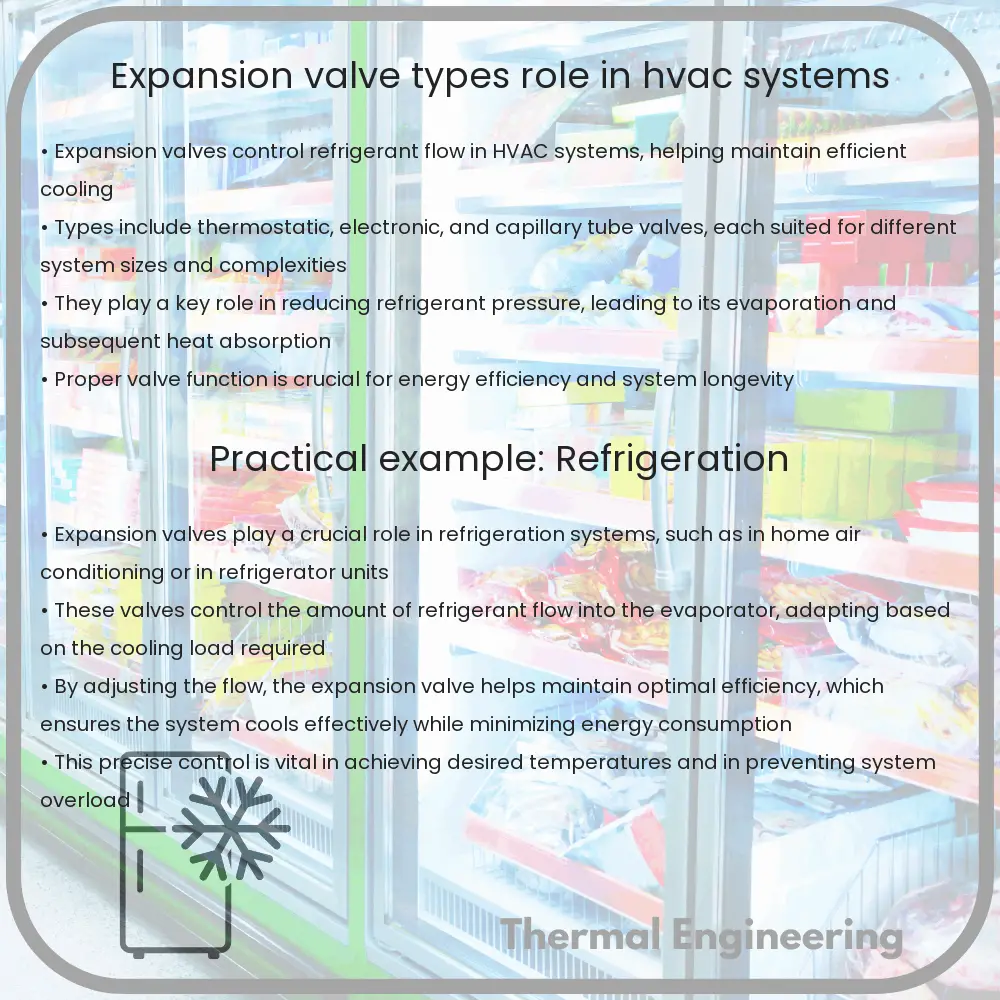Learn about expansion valves, crucial components in HVAC systems for controlling refrigerant flow and pressure.

Understanding Expansion Valves: Types and Their Role in HVAC Systems
An expansion valve is a critical component in refrigeration and air conditioning systems, playing a pivotal role in controlling the flow of refrigerant into the evaporator while also dropping its pressure. This part of the HVAC system is essential for facilitating the heat exchange process that is necessary for cooling and heating environments efficiently. Here, we will explore the different types of expansion valves and their specific roles within HVAC systems.
Types of Expansion Valves
- Thermostatic Expansion Valves (TXVs or TEVs): These valves adjust the flow of refrigerant based on the evaporator’s load conditions. They are highly efficient in applications where load conditions vary significantly. A TXV consists of a temperature sensor, a diaphragm, and a spring, which work together to regulate refrigerant flow based on the temperature and pressure in the evaporator.
- Electronic Expansion Valves (EXVs): Utilizing electronic controls to regulate refrigerant flow, EXVs offer precise control and efficiency. They are typically used in newer, more advanced refrigeration and air conditioning systems that require accurate control over wide operation ranges.
- Automatic Expansion Valves (AXVs): These valves maintain a constant superheat at the evaporator outlet and are less precise than TXVs. AXVs automatically adjust the flow of refrigerant based entirely on the pressure in the evaporator, which does not always account for all load variations.
- Capillary Tubes: Although not a valve, capillary tubes perform a similar function in smaller refrigeration and air conditioning units. A capillary tube is a long, narrow tube which restricts refrigerant flow, causing a pressure drop as refrigerant passes through it. They are simple, inexpensive, and have no moving parts, but are less adaptable to changes in operating conditions compared to other types of expansion devices.
Role of Expansion Valves in HVAC Systems
Expansion valves serve two primary functions in HVAC systems:
- Refrigerant Flow Regulation: By controlling the amount of refrigerant that enters the evaporator, expansion valves help to optimize the efficiency of the heat absorption process. Inadequate or excessive refrigerant flow can lead to poor system performance and increased energy consumption.
- Pressure Reduction: Expansion valves reduce the pressure of the refrigerant from the high-pressure condenser level to the lower pressure that is suitable for evaporation. This pressure drop is crucial as it allows the refrigerant to absorb heat from the environment, a fundamental principle in refrigeration and air conditioning.
In summary, expansion valves are vital for the effective operation of HVAC systems. Their ability to control refrigerant flow and reduce its pressure enables these systems to adjust and maintain desired indoor temperatures under varying conditions. Understanding the different types of expansion valves and their operation helps in selecting the right component for specific HVAC applications, ensuring both optimal performance and energy efficiency.
Conclusion
Whether it’s the precise control offered by a TXV, the advanced capabilities of an EXV, the simplicity of an AXV, or the straightforward nature of capillary tubes, choosing the right type of expansion valve depends on the specific needs and conditions of the HVAC system in question. By effectively managing the flow and pressure of refrigerant, these valves play a crucial role in the function and overall efficiency of cooling and heating systems worldwide.